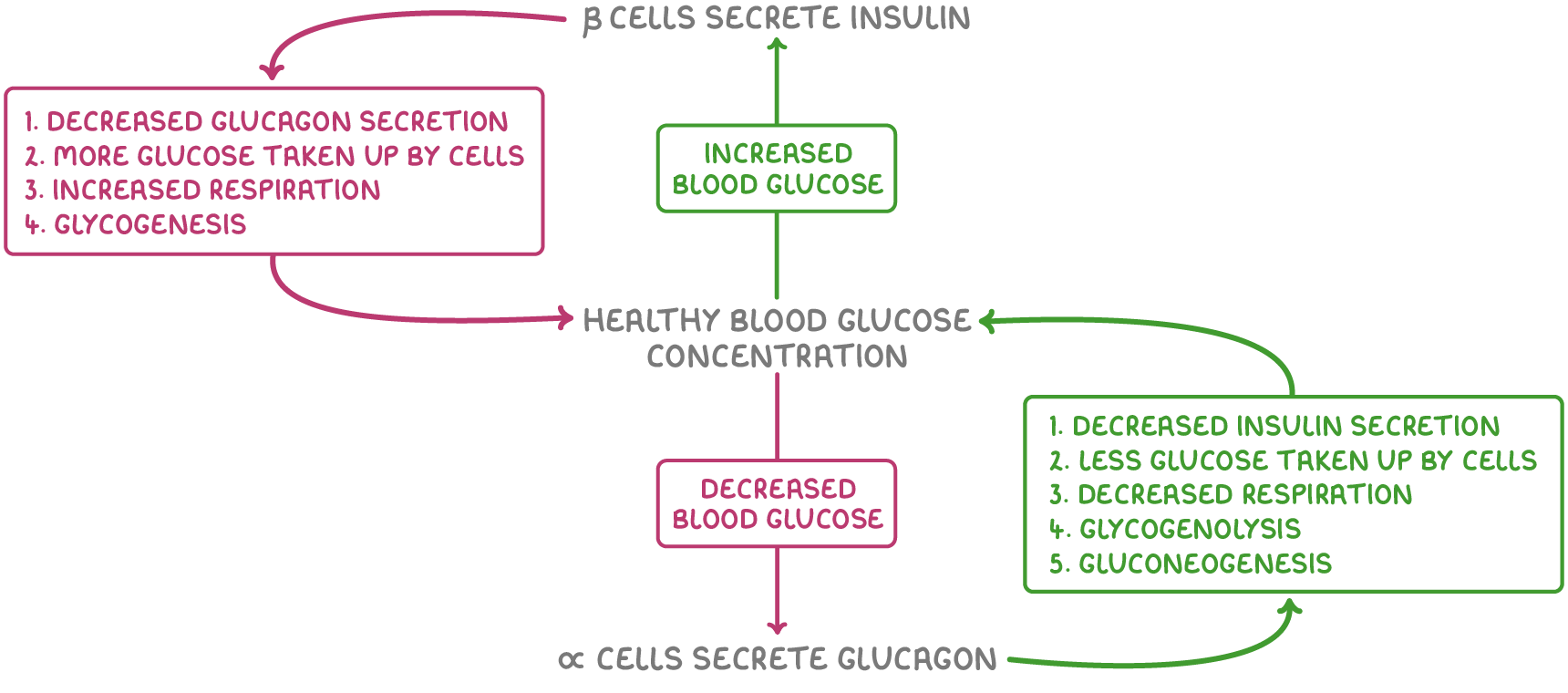Control of Blood Glucose
This lesson covers:
- The role of the pancreas as an endocrine gland
- The regulation of blood glucose levels by insulin and glucagon
- The role of cyclic AMP in blood glucose regulation
The role of the pancreas as an endocrine gland
The pancreas can act as an endocrine gland using special cell clusters called the islets of Langerhans. The cells within the islets secrete different hormones directly into blood vessels.
These islets primarily contain two types of cells:
- Beta (β) cells - They secrete the hormone insulin.
- Alpha (α) cells - They secrete the hormone glucagon.
Both insulin and glucagon are crucial in regulating blood glucose levels.
This is vital because:
- Glucose is essential for cellular respiration.
- Extreme blood glucose levels can lead to osmotic imbalances in cells, potentially causing cell death.
How insulin and glucagon control blood glucose
Insulin and glucagon collaboratively maintain normal blood glucose levels through negative feedback mechanisms.

When glucose levels increase, insulin acts to reduce blood glucose through several mechanisms:
- Inhibition of α cells - Reduces glucagon secretion.
- Increased glucose uptake - Insulin increases the permeability of muscle and fat cells to glucose by increasing the incorporation of GLUT4 proteins into their cell-surface membranes.
- Increased respiration - Increased glucose breakdown for energy production.
- Glycogenesis - Glucose is converted into glycogen for storage, primarily in the liver.
When glucose levels decrease, glucagon acts to increase blood glucose through several mechanisms:
- Inhibition of β cells - Lowers insulin secretion.
- Decreased respiration - Decreases glucose breakdown.
- Glycogenolysis - Glycogen is converted back into glucose in the liver and muscle cells.
- Gluconeogenesis - Glucose is produced from amino acids and fats in the liver.
Adrenaline also works with glucagon to increase blood glucose levels when they are too low by promoting glycogenolysis and gluconeogenesis in liver and muscle cells.
The role of cyclic AMP in blood glucose regulation
Cyclic AMP (cAMP), a second messenger, helps to regulate blood glucose via the action of adrenaline and glucagon when blood glucose concentration is too low.
This mechanism involves:
- When blood glucose needs to increase, adrenaline and glucagon are released and bind to specific receptors on liver cells.
- This binding alters the receptor protein's conformation.
- G proteins are activated, which then activate adenylyl cyclase.
- Adenylyl cyclase's activation results in the production of cAMP.
- cAMP activates kinase proteins, leading to an enzyme cascade.
- Phosphorylase kinase enzymes get activated by the addition of phosphate groups.
- The enzyme cascade ultimately increases glucose formation in liver cells.
- The newly formed glucose diffuses from the cells into the bloodstream, raising blood glucose levels.